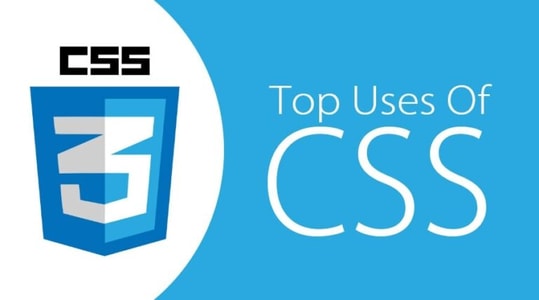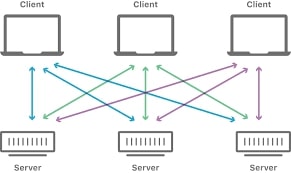CSS is the language for style sheets that are used in describing the presentation of an HTML document and its design which includes layout, fonts, and colors. CSS is so famous among the web development community because it separates the content part of a website from the design part. CSS can be used in various kinds of devices that vary in the size of their display screen. The CSS language is not dependent on HTML at all and it can be paired up with any XML-based markup language. The specifications that bound CSS is well maintained by the World Wide Web consortium. The rule set consists of a declaration block and a selector block. In this article, we are going to tell you about how you can use CSS for the purpose of web development. Let’s see the uses of CSS.

- Compatibility:
The first in our list comes compatibility. If you are using CSS, you do not need to be stressed about its compatibility with older versions. The new versions of CSS are fully compatible with the older versions. For example, if there is any web application that was developed using the older versions of CSS and you want to edit and add new things in the newer versions of CSS then that can be easily done. This helps you to easily upgrade a website or web application without bothering about the version it was actually developed in.
2. Uses In The E-Commerce:
CSS has proven to be very useful in the domain of e-commerce. In the domain of e-commerce, there are a lot of different types of industries and CSS has helped them develop their application framework on any scale that they needed. CSS also gives you the option to add a number of libraries while you are creating the web application. The source code that is associated with these libraries can be easily used in pair with an HTML Framework for developing an e-commerce website from scratch.

3. Maintenance of website:
CSS plays an important role in maintaining websites. You can use CSS to make the website look and feel much more flexible than it originally is. You can also alter the website in a more convenient manner using CSS. CSS makes the formatting of HTML and corresponding data elements very easy. This is why maintaining websites using CSS is much more convenient than any other method.

4. Impact on Social Media:
Social media website development is largely associated with the use of CSS in their HTML framework. For example, Facebook applications can be easily coagulated with the corresponding frameworks. It is possible to implement the HTML client library files based on the style in CSS. This is the way you can work on the different extensions. Platforms that are based on social media can be interrelated with the framework. You can make enhancements to them from the perspective of the end user.

5. Making accessibility easy:
If you use CSS, you get a better solution from the point of view of accessibility. This allows the users to update their user interface according to their business needs. Another plus side of this is that the web pages developed using CSS can be easily rendered by different devices. From the business perspective, this provides a much deeper impact if we consider how it feels and looks.

6. Image file Handling:
If you use CSS in building your application or website, the styling libraries of CSS really helps in outputting the images to the browser. In the beginning, it was a bit difficult to style and edit the images that already existed. But now with the help of CSS, the images that are received as outputs can be received in various formats like jpg, gif, and png. They can also be modified according to the styling format that is specified or are required. This feature that is provided by CSS can be used in editing different types of images or creating things such as watermark, thumbnails, image cropping and so on.

7. Dynamic Website Template handling:
It is possible to create and handle dynamic websites using CSS along with HTML frameworks. It is very helpful when you are trying to add or edit web pages and elements to the respective websites or web servers. If you add CSS extensions to an HTML document and incorporate the same with the template on the server side, it becomes very easy to handle the elements that are dynamically allocated. By using CSS, you can handle these in a more organised and proper manner. Using the CSS templates, these elements can be used to style the web pages in a pattern that is dynamic.
8. End-User and Server Side-Representation:
The CSS files that you use in your web pages can interact directly with the server-side user end response. You can use it for or interface styling purposes on the webserver side. If you do it this way, it turns out to e produce a web representation that is better from the perspective of end-users.

CONCLUSION:
In this article, we have discussed most of the important areas in which you can use CSS to make your website or web application better. You can go through the list and see which one of these you can apply to your project. CSS has a large area of application and it helps to bring out the best of any website. We hope that this article was able to enlighten you on the uses of CSS.